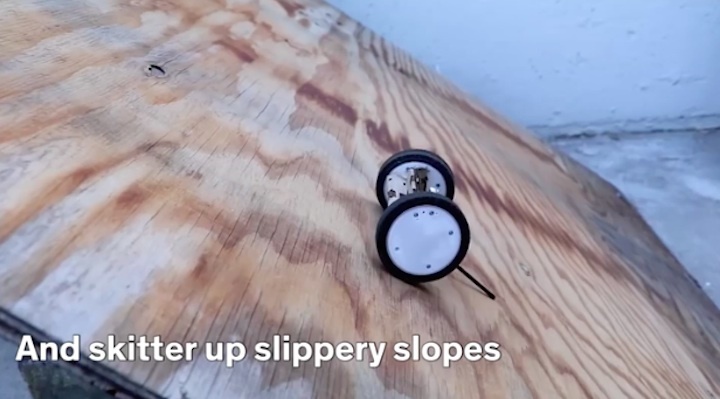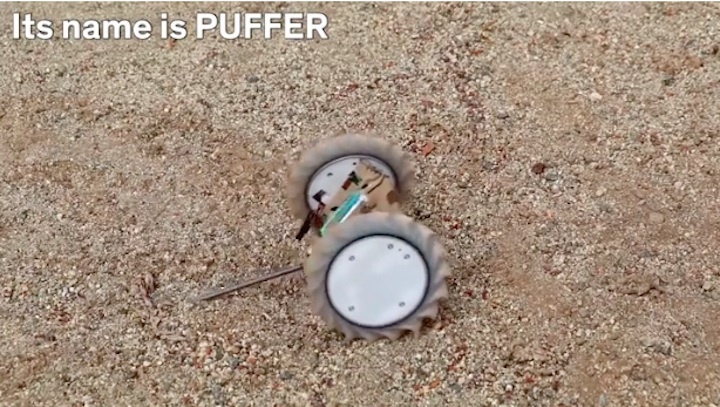.
NASA Tests Origami-Inspired Robot That May One Day Explore Mars
This small, nimble robot can fold and unfold itself
It costs a stupendous amount of money to send something from the surface of Earth to the surface of Mars, and there are severe limits on the volume and mass that you can send at any one time. In order to stuff the maximum amount of science into the minimum amount of space, NASA has had to get creative, with landers and rovers designed to be lightweight and foldable.



At NASA’s Jet Propulsion Laboratory, in Pasadena, Calif., engineers have long been trying to cram as much robot as possible into the absolute minimum amount of space, and a team of roboticists there recently showed us their latest creation: PUFFER, the Pop-Up Flat Folding Explorer Robot. It’s designed to pack down nearly flat for transport, and then re-expand on site to investigate all the places a bigger rover can’t quite reach.
The overall idea with PUFFER is that you’d pack a bunch of them along with the next Mars rover, and send them out whenever you want to go somewhere that it would be either risky or impossible for the larger rover to go. Maybe this is crawling along dunes of deep sand, taking a trip down the steep sides of a crater, or exploring little nooks and crannies where a larger rover simply can’t fit.
PUFFER’s small size and weight also open up some interesting possibilities when you think about sending more than one of them on a mission at once. Potentially, a lot more than one of them. Having access to a small swarm of PUFFERs means that you could set up robots to cooperate with each other, perhaps even to the extent of robots providing physical assistance to one another to do more comprehensive science.
One of the most exciting things about PUFFER is how it’s helping to bring some of the coolest robotics research we’ve seen over the last several years into the realm of practical applications. Most of the time, when we write about things like origami robots, the best that we can say is that in the abstract they might, at some point, be good for disaster relief or exploration or something like that. With PUFFER, JPL is taking the next step, saying, “Okay, how can we make these technologies actually do something useful in a real world environment, even if that real world is some world other than Earth?”
Quelle: IEEE

